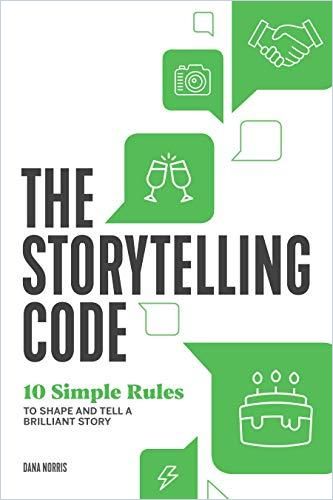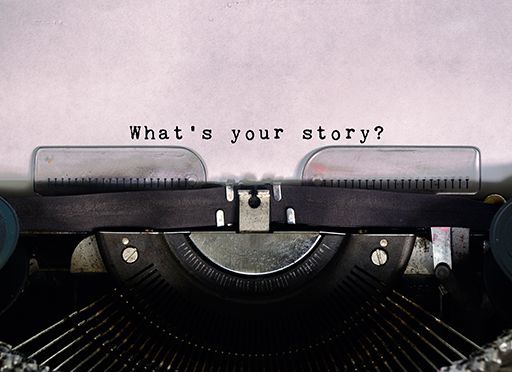Dana Norris, the founder of Story Club, a nonfiction storytelling show, offers a brief, fast-moving guide to storytelling for public speaking.

Using Stories to Engage Audiences
Fast tips for storytelling
Dana Norris, the founder of Story Club, a nonfiction storytelling show, has an MFA in creative nonfiction and an MA in religious studies. She has written for McSweeney’s Internet Tendency, The Rumpus, Tampa Review, and more. Her brief, fast-moving guide aims to teach storytelling for public speaking. You can use her useful tips, charts and checklists to help you with certain toasts, speeches and even stand-up comedy performances.
Norris’s approach is not business-specific, and businesspeople are likely to find some of her advice inappropriate for a formal business setting. Those seeking to improve their social presentations in less formal business environments, social settings or onstage will find Norris’s tips handy, if not groundbreaking.
As long as you are getting your message across, there is no wrong way to tell a story.Dana Norris
Similar, less breezy but more substantial – and perhaps more useful for businesspeople – parallel works offering storytelling advice for presenters in a professional setting include Paul Smith’s manuals Sell with a Story and Lead with a Story.
Norris does offer inclusive, straightforward guidance that every storyteller – regardless of context – should follow. Foremost is her caution to consider your audience, your content and your purpose for telling a story. Likewise, define the point of your story and craft your message to illuminate it.
Plot your path
Norris reminds you that your plot should include a beginning, a problem, failed attempts to solve the problem, a solution and an ending. Set out to describe the problem, your attempts to solve it, and the conflict and tension you encountered. Explain why you wanted to solve the problem. Norris explains that audiences relate to stories that include unsuccessful attempts at problem solving. She perceptively urges you to ask: How did the problem’s resolution come about, and what actions happened or needed to happen?
The author defines the protagonist of any story as someone who intentionally or unexpectedly creates or does something new. An underdog overcomes obstacles, for example, or a character surmounts adversity through repeated efforts or embarks on a personal quest. The main character becomes a hero. You must, Norris asserts, align your plot with your story goal.
A story needs conflict; it needs a problem. Dana Norris
The author is clear about several other things you need to do: Describe details. Tell the truth. Realistically recreate dialogue. One of her most telling pieces of advice is that your emotions and reactions to an event will have a far more powerful impact on your audience than just a description of the event.
Prepare and practice
Before you draft your presentation, Norris advises, find out your audience’s demographics – their age, business hierarchy, supervisors or subordinates. Is the setting formal or casual?Will the people be fresh or ending a long day?
If you don’t practice, you might be great. But only through deliberate practice can you guarantee that you will be great.Dana Norris
Learn whether your audience needs to leave on time for a subsequent convention session, class or event, or if they can relax and linger. Mark your notes regarding the emotion, pace or pauses you want to take, then practice with a mirror and a timer. Norris recommends avoiding profanity unless your audience wants and expects it – as they might in a comedy club.
Less is more
Fine-tune your rough draft, Norris admonishes, so that you create a concise, effective story that will hold an audience’s attention. The single best teaching example she offers is not to say simply that you’re going to your grandmother’s house. Paint the picture, instead. Say you’re going to your grandmother’s house, where you will “sit down on her blue, plastic-covered couch.”
Furthering this advice, Norris calls on you to include sensory details. Instead of saying you were scared, describe what “scared” looked or felt like.Add some original, strange but true detail that will evoke laughter or shock.
Norris cites British philosopher H.P. Grice’s advice on communication: Offer all the information you can, but no more than necessary while, she repeats, maintaining accuracy. Avoid incorrect, untrue or exaggerated information. Don’t drift into tangents. Provide only relevant material and present it with brevity and clarity.
The ending isn’t where the story stops; the ending is what the story means. Dana Norris
Norris stresses that your ending must offer closure, a final statement or a call to action, but it should not be predictable. She advises experimenting with an unexpected surprise or a “zinger” ending. Employ a “callback,” a hint of a message that comes from within the story; a “fast forward,” or jump ahead, that reveals a surprise; or a “full circle,” an arrival back to the beginning of the story that gives the reader a better understanding of the overall situation.
Don’t memorize your story. Instead, the author instructs, focus on your main plot points. Let it flow naturally.
Be vulnerable
Norris assures you that stage fright is normal and healthy. It means you care, and gives you positive energy. Be excited, not nervous. Your audience wants you to succeed. She offers slightly New Age guidance when she states the obvious: you are the only person who can tell your story.
Norris lays out the importance of building empathy by telling a story about your frustration, exhaustion or fear to make your audience care about you and understand why you care about them. They need to trust your sincerity. She backs up this advice by citing a neuroscientist’s discovery that when people hear a story with emotional and personal meaning, their brains release a bonding chemical, oxytocin. Thus, your emotions connect you to your audience.
While repetitive and slight, Norris’s manual offers sound, basic suggestions for comedians and speakers in social situations and, perhaps, in casual business settings. She provides a quick read, a primer for creating a worthwhile narrative. Those preparing nervously for a public moment can benefit from her grounding in storytelling fundamentals.




